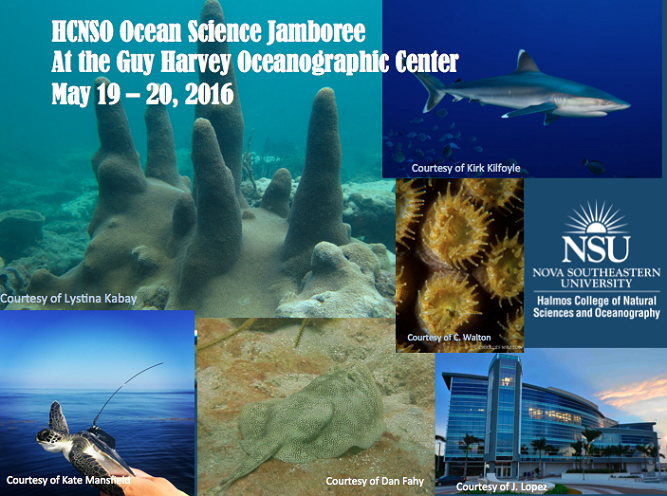Title
Taxonomic and Distributional Appraisal of the Genera Sergia and Sergestes (Decapoda: Dendrobranchiata: Sergestidae) Within the Northern Gulf of Mexico
Location
Guy Harvey Oceanographic Center Facility
Start
5-20-2016 4:30 PM
End
5-20-2016 4:45 PM
Abstract
The proposed study is unique because it will provide the first quantification of the sergestid species assemblage within the northern Gulf of Mexico (GOM). Current knowledge of the species is limited in the GOM as all previous studies were performed solely at one location in the eastern Gulf. This study fills an essential requirement in providing a description of the sergestid assemblage in terms of abundance, biomass, species richness, evenness and diversity, which will be quantified from data collected on the DEEPEND (Deep Pelagic Nekton Dynamics of the Gulf of Mexico) cruises from 2015 and 2016.
Day and night time depth distributions will be used to determine the level of migratory behavior (no migration, weak migrators, and strong migrators). In addition, spatial assemblage maps will be created using ArcGIS software to better display similarities or differences in species distributions over the years of study that trawl data cover. Due to the roles sergestids play in pelagic food webs, including providing food for many commercially important fisheries, they are a critical component in the maintenance of a healthy GOM ecosystem. In addition, a 2011 dataset of the same parameters will be quantified from a dataset available from the M/V Meg Skansi 2011 cruise, which collected samples one year after the Deepwater Horizon oil spill. There are no data available from the area before the oil spill; therefore, this “possibly contaminated” baseline will be compared with the DEEPEND data, to determine if substantial differences in the assemblage have occurred between these two datasets. Due to the increased understanding of depth distributions, migratory behavior and reproduction of the study species, this study has the potential to influence assessments following after future disasters.
Taxonomic and Distributional Appraisal of the Genera Sergia and Sergestes (Decapoda: Dendrobranchiata: Sergestidae) Within the Northern Gulf of Mexico
Guy Harvey Oceanographic Center Facility
The proposed study is unique because it will provide the first quantification of the sergestid species assemblage within the northern Gulf of Mexico (GOM). Current knowledge of the species is limited in the GOM as all previous studies were performed solely at one location in the eastern Gulf. This study fills an essential requirement in providing a description of the sergestid assemblage in terms of abundance, biomass, species richness, evenness and diversity, which will be quantified from data collected on the DEEPEND (Deep Pelagic Nekton Dynamics of the Gulf of Mexico) cruises from 2015 and 2016.
Day and night time depth distributions will be used to determine the level of migratory behavior (no migration, weak migrators, and strong migrators). In addition, spatial assemblage maps will be created using ArcGIS software to better display similarities or differences in species distributions over the years of study that trawl data cover. Due to the roles sergestids play in pelagic food webs, including providing food for many commercially important fisheries, they are a critical component in the maintenance of a healthy GOM ecosystem. In addition, a 2011 dataset of the same parameters will be quantified from a dataset available from the M/V Meg Skansi 2011 cruise, which collected samples one year after the Deepwater Horizon oil spill. There are no data available from the area before the oil spill; therefore, this “possibly contaminated” baseline will be compared with the DEEPEND data, to determine if substantial differences in the assemblage have occurred between these two datasets. Due to the increased understanding of depth distributions, migratory behavior and reproduction of the study species, this study has the potential to influence assessments following after future disasters.


